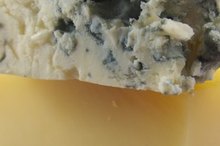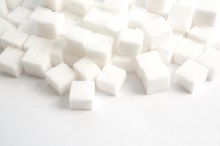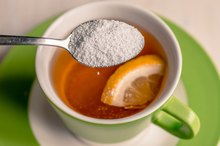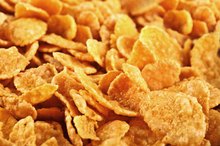Is Lactose an Aldose?
Lactose is milk sugar -- it's a carbohydrate that occurs in dairy products. Some sugars have structures that are classified as aldoses, meaning they have functional groups called aldehydes as part of their chemical makeup. Lactose isn't an aldose, but it's made of two smaller sugars, both of which are aldoses.
Lactose
Lactose, or milk sugar, is a carbohydrate classified as a disaccharide, explain Drs. Reginald Garrett and Charles Grisham in their book "Biochemistry." Disaccharides consist of two smaller sugar units that are chemically bonded together 1. The smaller units in the case of lactose are glucose -- ubiquitous in nature -- and galactose. When you consume lactose, your digestive enzymes break it down into its constituent smaller sugar units, which you absorb into the bloodstream.
- Lactose, or milk sugar, is a carbohydrate classified as a disaccharide, explain Drs.
Aldoses
What Is the Function of Lactose?
Learn More
Both glucose and galactose are aldoses, meaning they're sugars whose chemical structures have aldehydes at one end when they're in straight chain form. An aldehyde consists of a carbon atom with a double bond to an oxygen atom, a single bond to a hydrogen atom and a single bond to another carbon atom. Glucose and galactose, like other sugars, can exist either as straight chains or in cyclic form. The aldehyde is only present in the straight chain.
- Both glucose and galactose are aldoses, meaning they're sugars whose chemical structures have aldehydes at one end when they're in straight chain form.
- Glucose and galactose, like other sugars, can exist either as straight chains or in cyclic form.
Ramifications
The fact that lactose consists of two sugars, both of which are aldoses, is unimportant to your body and your cells. You can use aldoses such as glucose and galactose for energy, but you can also use non-aldose sugars -- called ketoses -- for the same purposes. The distinction is only important to chemists, who classify sugars through several methods, including number of carbons and whether or not they're aldoses.
Lactose Digestion
Sucrose, Dextrose & Maltodextrin
Learn More
Many people find lactose particularly interesting as a sugar because it's one that some individuals -- those with lactose intolerance -- can't digest. This is a function of these individuals producing insufficient quantities of the enzyme lactase, explains Dr. Lauralee Sherwood in her book "Human Physiology." The fact that lactose is made of aldose sugars in no way makes it more difficult to digest 2. Glucose -- an aldose -- is the most common dietary sugar, and you absorb it easily from a variety of sources.
- Many people find lactose particularly interesting as a sugar because it's one that some individuals -- those with lactose intolerance -- can't digest.
Related Articles
References
- “Biochemistry”; Reginald Garrett, Ph.D. and Charles Grisham, Ph.D.; 2007
- “Human Physiology”; Lauralee Sherwood, Ph.D.; 2004
- Hebbink G, Dickhoff B.. Application of lactose in the pharmaceutical industry. Lactose. 2019;pp.175-229. doi:10.1016/B978-0-12-811720-0.00005-2
- Smith KP. The origin of MacConkey agar. American Society for Microbiology. October 14, 2019.
- U.S. National Library of Medicine Genetics Home Reference. Lactose intolerance. Updated August 17, 2020.
- Westhoff G, Kuster B, Heslinga M, Pluim H, Verhage, M. Lactose and derivatives. Ullmann's Encyclopedia of Industrial Chemistry, pp.1-9. 2014. doi:10.1002/14356007.a15_107.pub2
- World Gastroenterology Organisation. Yogurt in nutrition: Initiative for a balanced diet.
Writer Bio
Kirstin Hendrickson is a writer, teacher, coach, athlete and author of the textbook "Chemistry In The World." She's been teaching and writing about health, wellness and nutrition for more than 10 years. She has a Bachelor of Science in zoology, a Bachelor of Science in psychology, a Master of Science in chemistry and a doctoral degree in bioorganic chemistry.









